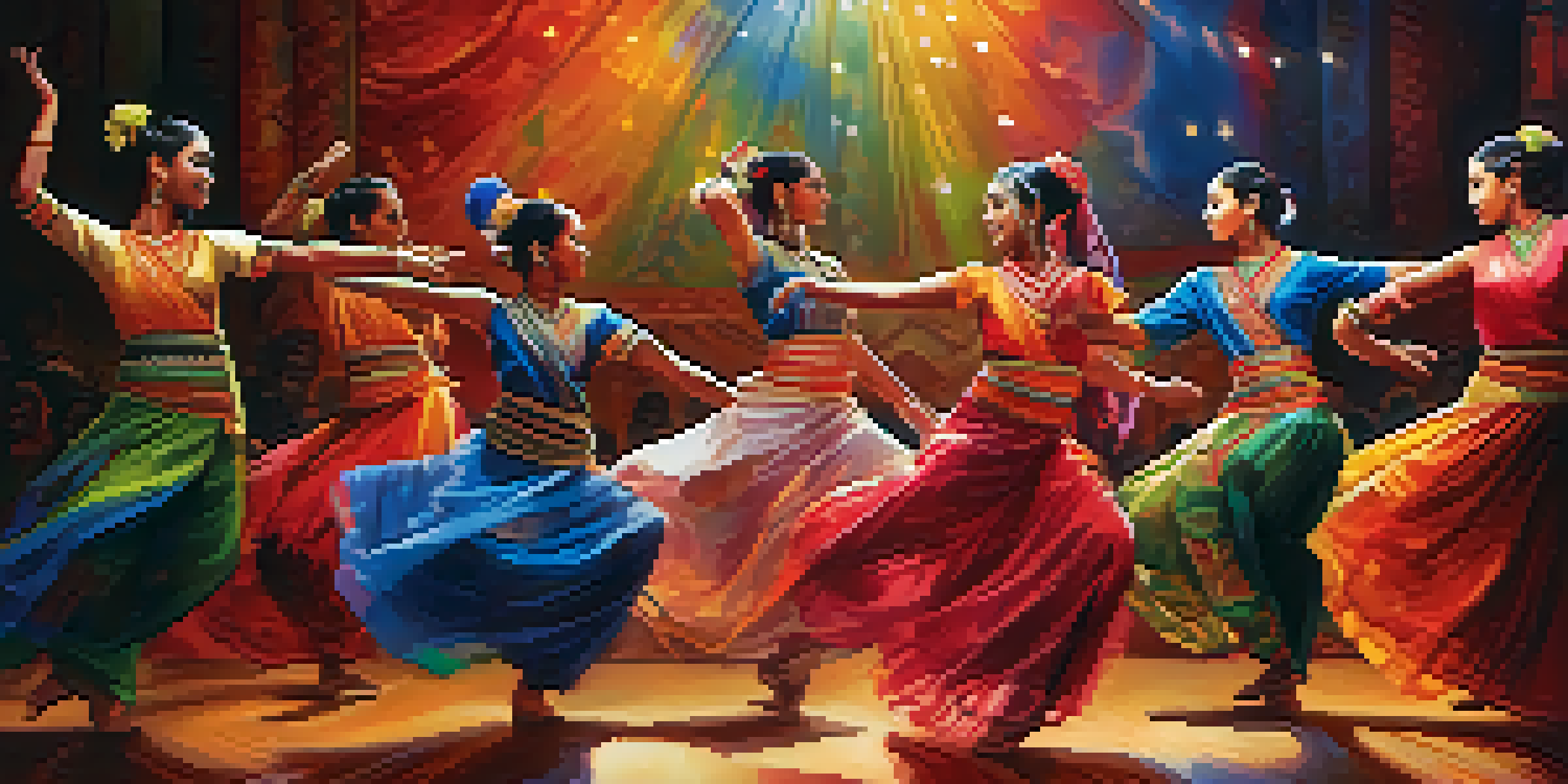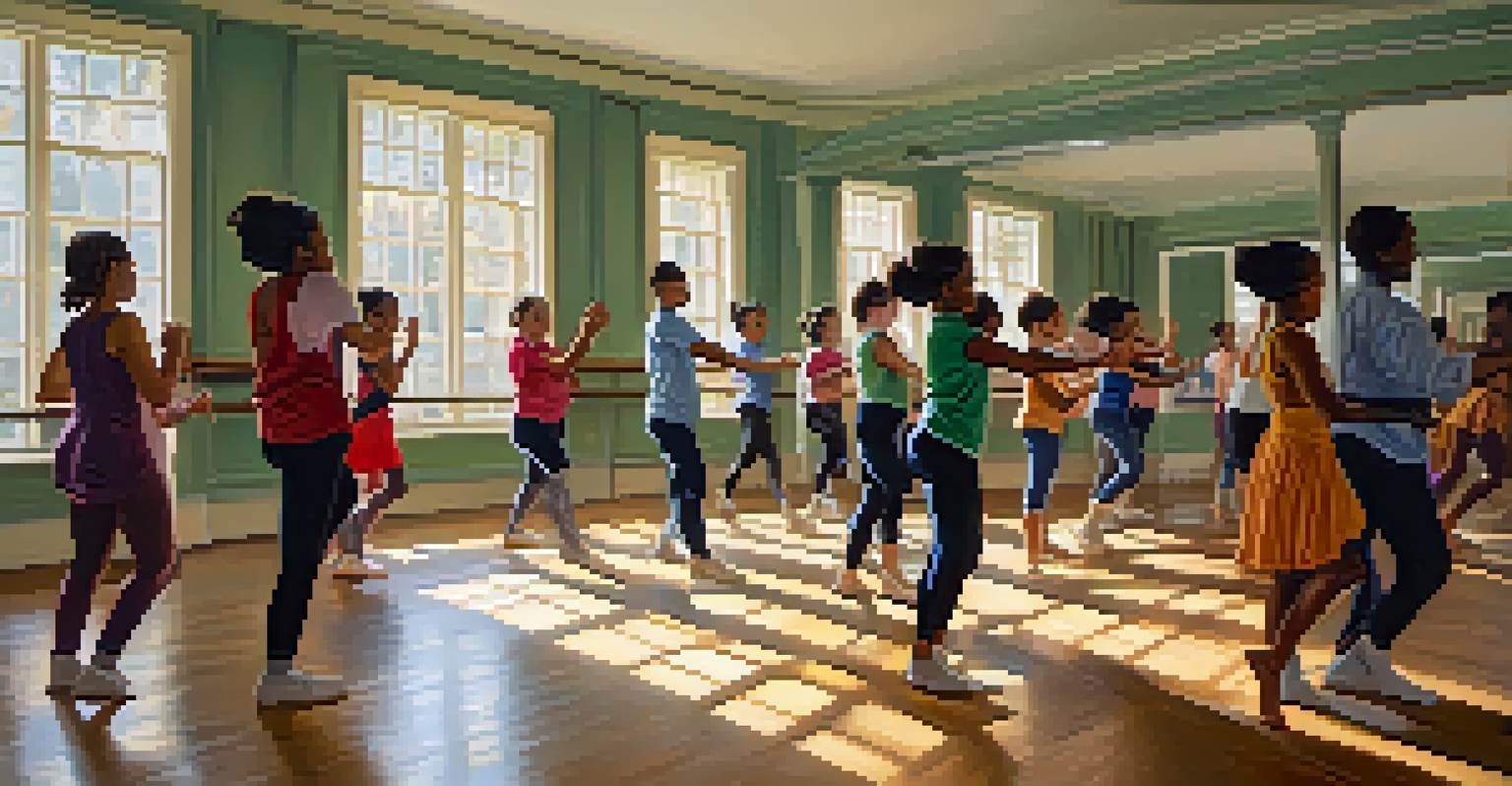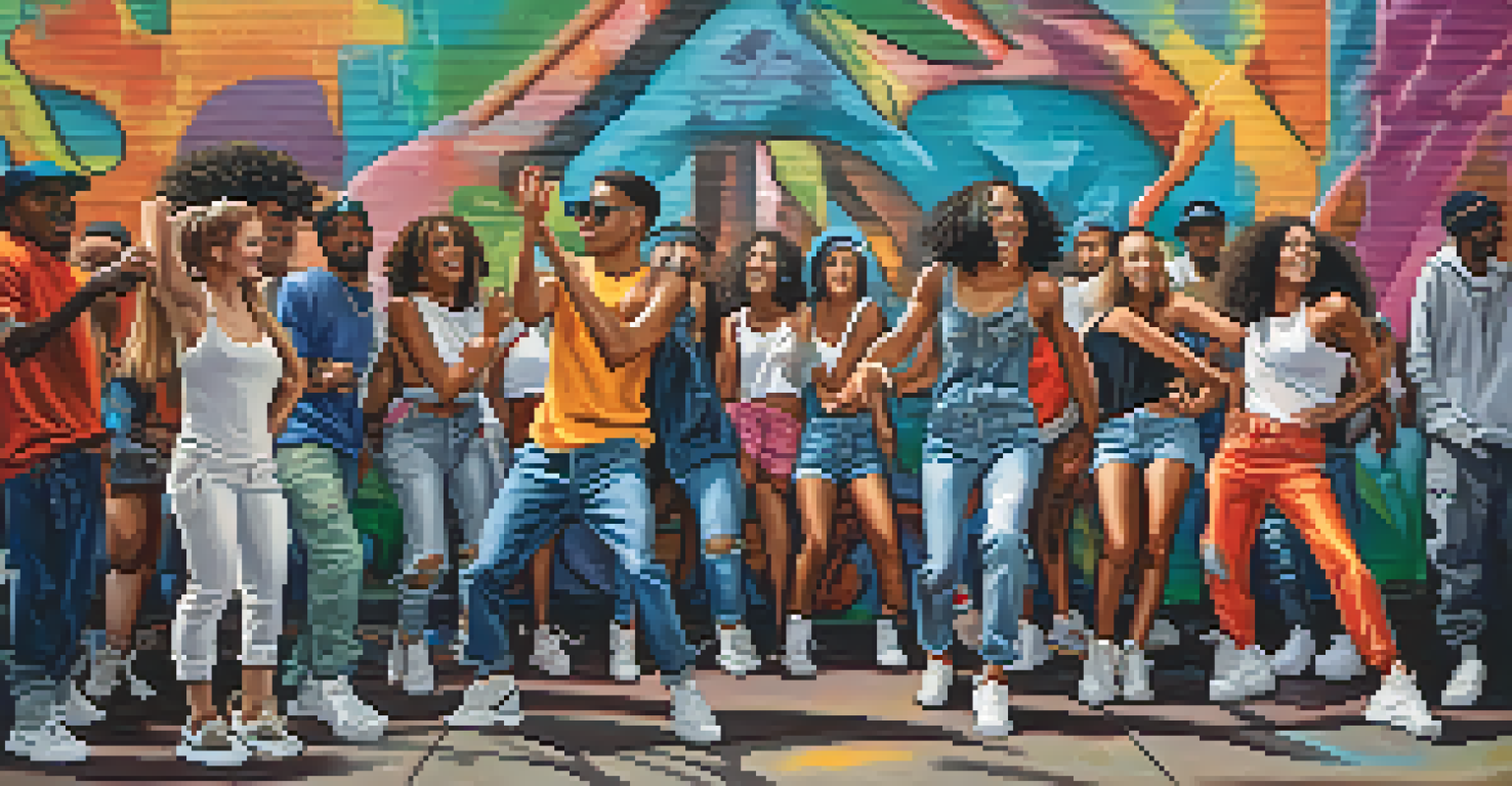Cultural Exchange: Dance Styles Influenced by Globalization

Understanding Cultural Exchange in Dance
Cultural exchange refers to the sharing of ideas, traditions, and practices between different cultures. In the realm of dance, this exchange is fascinating, as it allows various styles to blend and evolve over time. For instance, when traditional African dance met American jazz, it led to the creation of vibrant new forms like jazz dance and hip-hop.
Dance is the hidden language of the soul.
By embracing elements from diverse cultures, dancers can create unique performances that resonate with a broader audience. This cross-pollination enriches the art form, offering fresh perspectives and techniques. Think of it as a dance potluck where everyone brings their signature dish, resulting in a deliciously diverse feast.
As globalization continues to connect people across the globe, the dance world becomes a melting pot of styles, each influenced by the others. This ensures that cultural exchange remains a dynamic and ongoing process, continually shaping the way we express ourselves through movement.
The Impact of Social Media on Dance Styles
Social media platforms have dramatically transformed how dance styles are shared and popularized worldwide. With just a few clicks, dancers can showcase their skills and learn from others, regardless of geographical boundaries. Take TikTok, for example; it has launched countless dance trends that blend various styles into catchy, shareable routines.

This instant connectivity means that a dance move from one corner of the world can become a viral sensation in another within days. As dancers integrate these new moves into their repertoires, they contribute to a continuous cycle of influence and innovation. It's like a global dance challenge, where everyone is invited to join in and add their twist.
Cultural Exchange Enriches Dance
The blending of various dance styles through cultural exchange creates unique performances that resonate with a wider audience.
Moreover, social media fosters community engagement, allowing dancers from diverse backgrounds to collaborate and experiment together. This not only creates exciting new styles but also deepens mutual understanding and appreciation for different dance traditions, enriching the cultural tapestry of dance.
Exploring Fusion Dance Styles
Fusion dance styles are a prime example of how globalization has reshaped the dance landscape. These hybrids often emerge when two or more distinct dance forms come together, resulting in something entirely new and exciting. For instance, Bollywood dance, influenced by traditional Indian dance, has incorporated elements from hip-hop and jazz, captivating audiences worldwide.
Dancing is like dreaming with your feet.
The beauty of fusion lies in its ability to celebrate diversity while creating something universally appealing. Dancers who explore fusion styles often experience greater creative freedom, allowing them to break traditional boundaries and express themselves in innovative ways. It’s like mixing colors on a palette to create a stunning masterpiece.
As fusion styles gain popularity, they encourage dancers to explore and honor their roots while embracing the influences of other cultures. This not only enriches individual artistry but also fosters a deeper appreciation for the vast array of dance traditions that exist around the world.
Recognizing Traditional Influences in Modern Dance
While globalization introduces new elements to dance, traditional styles remain a vital source of inspiration. Modern choreography often pays homage to its roots, weaving in traditional movements and rhythms to create a richer narrative. For example, contemporary ballet dancers frequently incorporate African and Asian dance techniques into their performances.
By recognizing and respecting these traditional influences, modern dancers can create performances that honor the past while looking toward the future. It’s akin to a tree: while new branches grow, the roots provide stability and nourishment. This connection to tradition ensures that the cultural significance of dance is not lost amid the rapid changes of globalization.
Social Media Transforms Dance Trends
Platforms like TikTok enable rapid sharing and innovation of dance styles, fostering a global community of creators.
Furthermore, acknowledging traditional styles allows dancers to educate audiences about the cultural contexts from which these movements arise. This awareness fosters respect and appreciation for the diverse histories and values embedded in dance, making each performance not just an art form but a story waiting to be told.
Global Events and Their Influence on Dance Styles
Global events, such as festivals and competitions, serve as platforms for cultural exchange and the evolution of dance styles. Events like the World Dance Championship or international dance festivals bring together performers from diverse backgrounds, allowing them to showcase their unique styles. This convergence creates an exciting space for dancers to learn from one another and exchange techniques.
These gatherings often lead to the emergence of new trends as dancers absorb influences from various cultures. For example, the popularity of salsa dance has soared due to international festivals that celebrate Latin culture, encouraging dancers worldwide to embrace and incorporate its lively rhythms and movements into their own styles.
Moreover, such events foster collaboration and friendship among dancers, breaking down cultural barriers. This camaraderie not only enhances individual artistry but also promotes a shared love for dance that transcends borders, reinforcing the idea that dance is a universal language.
Dance Education in a Globalized World
In today’s globalized world, dance education has evolved to reflect the diversity of styles and influences that exist. Dance schools and academies now offer programs that incorporate various international dance forms, preparing students to become versatile performers. This exposure is crucial, as it equips them with the skills to adapt and innovate within the ever-changing dance landscape.
Moreover, online platforms have made dance education more accessible than ever, allowing students to learn from instructors around the globe. Imagine taking a hip-hop class from a choreographer in New York while being in a small town in Italy; the possibilities are endless. This democratization of dance education fosters a rich exchange of ideas and techniques.
Fusion Styles Celebrate Diversity
Fusion dance styles emerge from the combination of distinct forms, encouraging dancers to honor their roots while exploring new creative expressions.
As students immerse themselves in different styles, they not only expand their technical skills but also gain a greater appreciation for the cultural contexts behind each dance form. This holistic approach to dance education nurtures well-rounded artists who are equipped to contribute to the ongoing dialogue of cultural exchange.
Challenges of Globalization in Dance
While globalization has brought about exciting developments in dance, it also poses certain challenges. One major concern is the risk of cultural appropriation, where elements of a culture are taken without understanding or respecting their significance. This can lead to misunderstandings and hurt feelings among communities whose traditions are being borrowed.
Additionally, the commercialization of dance can dilute its cultural roots. As dance becomes a product to be marketed, the authenticity of its origins may be overshadowed by trends and performances designed purely for entertainment. It’s vital for dancers and audiences alike to remain aware of the cultural narratives intertwined with the styles they enjoy.

Addressing these challenges requires ongoing dialogue within the dance community. By fostering open conversations about cultural sensitivity and respect, dancers can navigate the complexities of globalization while celebrating the richness that diverse influences bring to the art form.